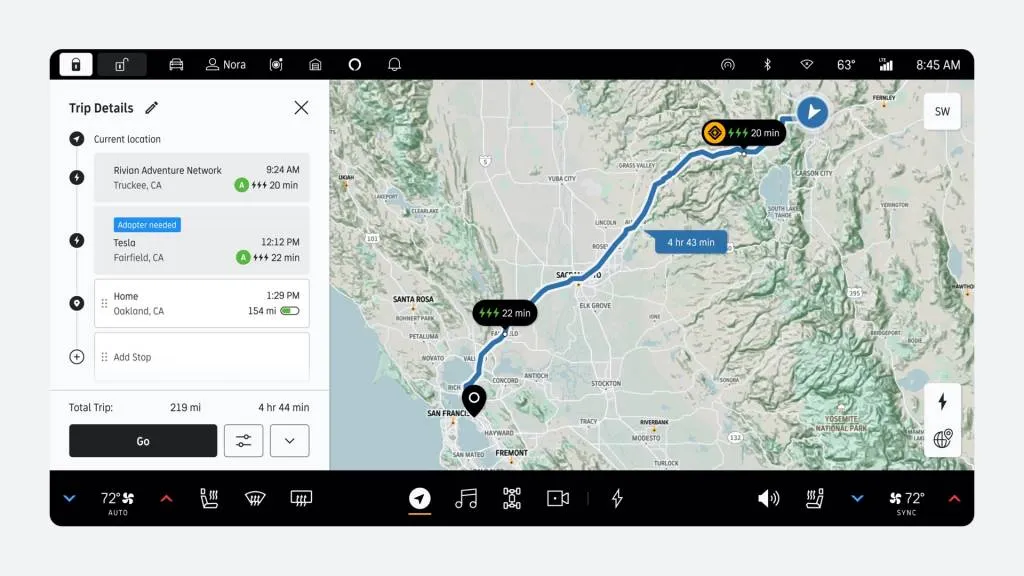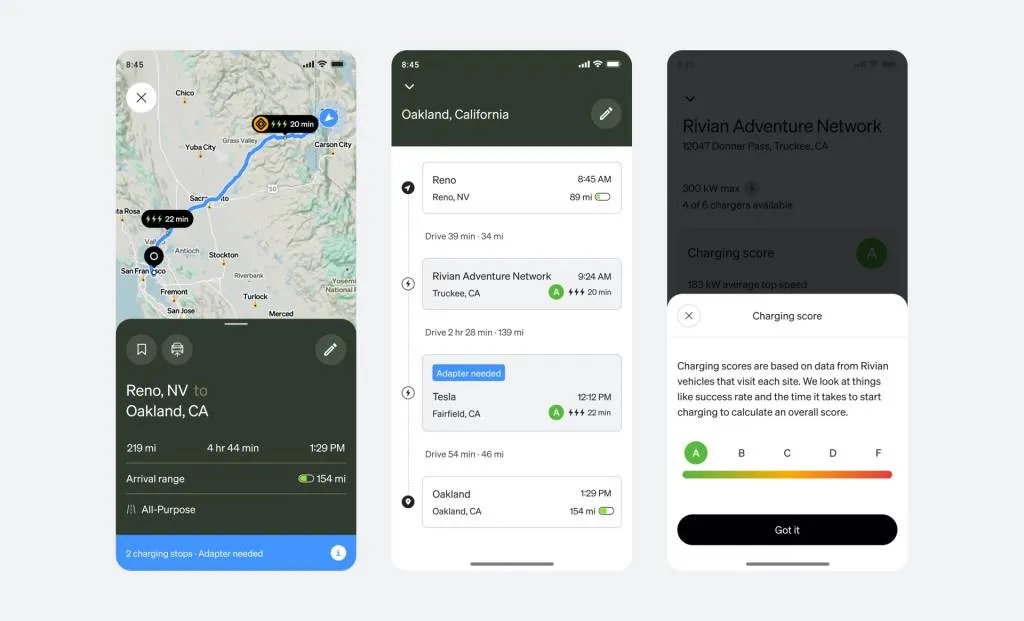[ad_1]
Rivian announced Monday that it will start planning routes around charger reliability in a new way—by grading each real-world charge site.
With that change, as part of Rivian’s Software Update 2024.11.01, which rolls out to its vehicles, including the R1T electric pickup and R1S electric SUV starting today, route planning will start favoring those chargers that, simply put, have a better record of charging its vehicles reliably.
Rivian notes that whenever a driver of its vehicles plugs into a fast charger, the vehicle logs a set of data including the charger’s peak rate, payment success, and overall session success. After there are enough sessions for that charger, good or not, it’s given a reliability grade from A (best) to F (worst).
As Rivian showed in provided images, the grades will be visible during route planning and in navigation and charging interfaces. According to Rivian, it’s the first automaker tool to make such a distinction and include collective reliability info in charger recommendations—and route-planning decisions.

Rivian charging grades for trip planning – Software Update 2024.11.01
Now, in Rivian’s trip planning and navigation, drivers will be steered toward charging sites with A and B grades as much as possible. As before, Rivian drivers can use preferences to set a route, filter chargers, and navigate to a destination, with the potential to dynamically change it along the way if stops are added.
The grading system will roll out for all fast-charging sites its vehicles can use, it says, including those on its own Rivian Adventure Network as well as multiple other networks—including Tesla Supercharger locations, which are now widely enabled and require the Rivian-provided adapter.
It also notes that ease of payment applies to these charger reliability scores. So while Superchargers and some other networks fully support direct-billing plug-and-charge capability; those without it might see their grades impacted by payment issues.

Rivian charging grades for trip planning – Software Update 2024.11.01
Rivian says that in choosing a fast-charging site, the vehicle’s peak rate may be above that of the charger, and in that case it clearly indicates so with a click of the information icon (i).
Although Rivian at no point directly says that it might choose a slightly slower charger that’s far more reliable over one that’s a speedy crapshoot, that appears to be the gist of it—and the real-world consequence, perhaps.
Charger reliability is surely top-of-mind for automakers, EV drivers, and prospective buyers alike. A 2022 UC Berkeley study found fast-charging in abysmal shape in the Bay Area, with various hardware “nonfunctioning.” There, earlier this year, some criticized Electrify America’s most recent plan for being short on measures to address charger reliability. The Biden Administration’s Joint Office of Energy and Transportation has, with the buildout of NEVI-supported fast-chargers, laid out the basis for tracking charger reliability, although it’s oriented more toward where to make investment in the future rather than what works best at present.
Not just for Rivian but for any EV brand, finding a charger that simply works—and works at a charge rate that shows off the capabilities of the vehicle—is important for making a positive impression. And with this high-profile grade system, perhaps it will instill on charger networks that better uptime and reliability really does make good business sense.
[ad_2]
Source link




